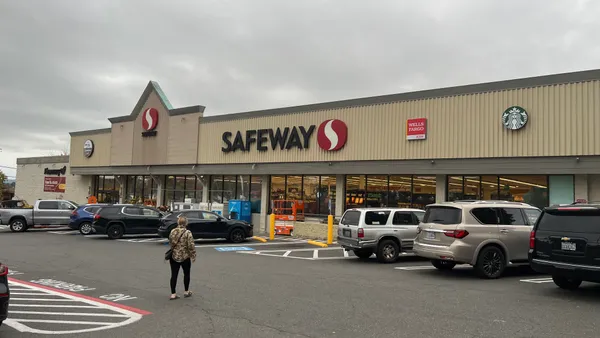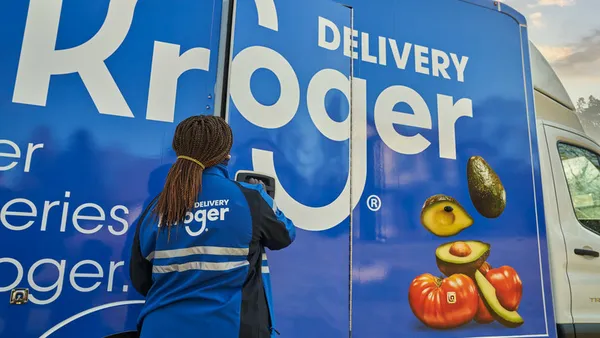Dive Brief:
- Walmart announced Friday it is expanding its InHome delivery service to an additional 10 million households.
- The expansion bolsters access to the service in the greater Philadelphia, Boston, Detroit, Minneapolis and San Bernardino, California, areas.
- The growth of InHome, which is an add-on to the retailer’s Walmart+ membership, marks a big step for Walmart’s growing grocery e-commerce business.
Dive Insight:
With this expansion, Walmart said InHome is now available to 45 million households across more than 50 markets — a nearly 30% increase in customer reach.
Walmart is positioning its InHome service, where workers trained by the retailer deliver groceries to customers’ refrigerators or garages, as a time saver for customers.
“We understand that customers are busy and want to make sure that they can have a seamless shopping experience that fits their needs,” Haley McShane, general manager of InHome at Walmart U.S., said in a statement.
Walmart launched InHome in 2019 as a standalone service and rolled it into its Walmart+ membership in 2022 as an add-on option. That same year, Walmart said it would hire more than 3,000 associate delivery drivers and build out a fully electric fleet of delivery vans to scale InHome from 6 million U.S. households to 30 million by the end of 2022.
The expansion builds on Walmart’s moves to bolster its e-commerce presence as well as its subscription program. Earlier this year, the retailer began offering on-demand early morning delivery. It also sped up delivery times to as little as 30 minutes and said it would bring drone delivery to more households.
Walmart U.S. saw 22% growth in e-commerce during its latest quarter. The retailer’s delivery business has now exceeded its pickup business in size, Walmart U.S. President and CEO John Furner told investors during an earnings call in May.
“Delivery times are getting faster, and the cost of delivery is coming down at the same time,” Walmart President and CEO Doug McMillon said on the call.
Walmart’s e-commerce efforts are pairing well with its growing grocery dominance. Walmart accounted for nearly 36% of all U.S. online grocery sales in the second quarter of 2023 — a new record for the retailer that was up 5 percentage points from its share a year prior, per a report last summer by Brick Meets Click and sponsored by Mercatus.
In November, an Insider Intelligence report found that Walmart is widening the gap with Amazon in grocery e-commerce and forecasted that the former’s share of the online grocery market will reach nearly 27% while the latter’s will fall to 18.5% by the end of 2024.
Walmart has also been busy on the grocery front, rolling out stores under a new prototype for its Neighborhood Market format, continuing to record growth in grocery sales and recently launching a new grocery brand called bettergoods.












